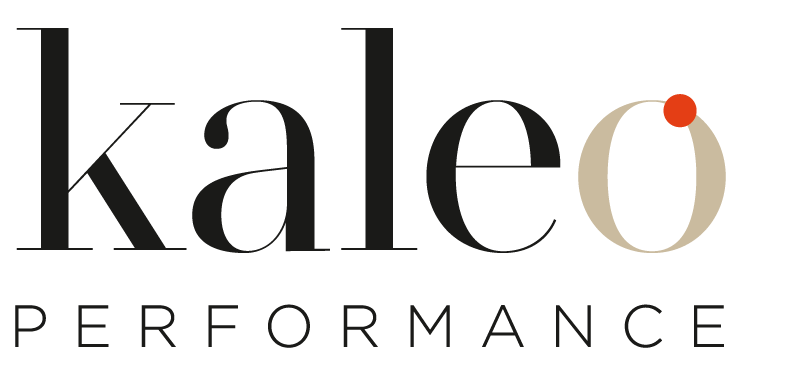All too often, IT decisions are made reactively, driven by immediate needs or the allure of cutting-edge technology, rather than a clear understanding of the company’s long-term strategic goals. As I discussed in a recent article, “Organization Design: Stop Drawing Boxes Before Defining the ‘Why’,” rushing to define structures before clarifying the strategic intent is a recipe for disaster. Similarly, as Simon Sinek so eloquently stated, we often rush to define the “How” (the technology) without first clarifying the “Why” (the strategic purpose). A strategy that must be updated continuously as per Willy Petersen. Just as organizational design should align with business strategy, so too should IT investments.
This short-sighted approach leads to wasted investments, fragmented systems, and a failure to leverage technology for competitive advantage. It’s like rushing to define the “How” (the technology) without first clarifying the “Why” (the strategic purpose). Making IT decisions that do not align with strategy is like building a house without blueprints. You might end up with something impressive, but it won’t meet your needs, be structurally sound, or provide a home.
So, how do we break this cycle and make smarter IT investments that truly drive results? Let’s dive in!
The Downward Spiral of Short-Sighted IT Choices: Missing the Strategic Imperative
• Business Processes vs Technology: Too often, companies choose tech that matches the old way of doing things. For example, buying an expensive ERP system, but configuring it to match the manual processes the company is already doing! Tech should be a lever to improve processes, aligned with the strategy, not a mirror. We need technology to DRIVE process improvement, not just automate broken processes.
• Shiny Object Syndrome: It’s tempting, I know! The pressure to adopt the latest technologies can lead to impulsive decisions. Think of a company buying an AI-powered chatbot because everyone else is doing it, without considering whether it actually improves customer service or reduces costs. Vendors are great at driving this behavior! Beware of the “demo dazzle.”
• Siloed Solutions and Lack of Integration: The classic scenario: The sales team uses one CRM, the marketing team uses another, and the customer service team uses a third. None of them talk to each other, leading to a disjointed customer experience. And the costs of integrating these systems later? Astronomical!
• The Technical Debt Burden: Oh, technical debt… the silent killer of IT projects. It’s the implied cost of rework caused by choosing an easy solution now instead of a better (but more time-consuming) approach. That quick-and-dirty integration solution might meet that deadline, but its fragility and constant maintenance will haunt you later.
• Lost Opportunities for Innovation: When all your IT budget is tied up in maintaining legacy systems, there’s no room for exploring new technologies like cloud computing, blockchain, or AI. You’re stuck in the past while your competitors are building the future.
Core Principle: Technology Enables Strategy, Not Dictates It!
Technology should enable strategy, not dictate it. IT choices should be driven by a clear understanding of the company’s strategic goals and how technology can help achieve them. Just as a well-designed organization supports a clear strategy, well-chosen IT systems enable a company to execute its strategic vision. Rushing into IT choices without a solid strategic foundation is like building a house without blueprints – you might end up with something impressive, but it won’t meet your needs.
It’s about having a balanced budget between maintaining IT components underpinning business performance (e.g., improve the order management system to speed up quote to cash) and investing proactively in future technology enabling the next 3-year strategy.
Important Consideration: Knowing When IT Isn’t The Answer
In some cases, IT is not the solution. Integrating all the business knowledge into an automatic system can inadvertently enable the “commoditization” of the company’s competitive advantage, allowing newcomers to catch up quickly (until uberization in some cases) or employees to leave the company with critical knowledge. Sometimes, the best strategy is to not codify everything.
A Pragmatic, Step-by-Step Approach to Strategic IT Choices
Here’s a framework, honed through years of experience:
Step 1: Define Your ‘Why’ and Strategy: Know Where You Stand and Where You’re Going – and Why
• Situation Analysis: Conduct a rigorous assessment of the current IT landscape.
• Assumptions and Risks: Explicitly identify the assumptions you’re making and the risks you’re facing related to technology.
• Strategic Choices: Based on your analysis, identify a limited number of strategic technology choices. For example: “Become a data-driven organization,” or “Embrace cloud computing for agility and scalability.”
• The “What If Not?” Question: Acid test any investment by using the “What if we are not investing? What is the impact on the business process, on cybersecurity, or on future IT investments?” This forces a deeper understanding of the true need.
Example: A retail company facing increasing competition from online retailers. Their strategic IT choices might include:
* Invest heavily in data analytics to personalize the customer experience.
* Migrate to a cloud-based e-commerce platform.
* Implement a mobile app for in-store shopping.
Step 2: Define the ‘To’: Articulate a Compelling Vision and Measurable Goals and Adaptable Strategy
• Vision Statement/North Star: Develop a clear and inspiring vision statement that articulates your desired future state of your business processes/business outcomes and how technology will enable the organization.
• Honest Gap Assessment (Business and IT) by using From…To: Bridge the gap between the current business performance into the desired state and then how the current IT features can contribute to the business end state, and if not, identify the gap with the desired future state.
For example:
• From scattered customer data (one system for proposals, another one for contract management, one for order fulfillment, and finally, one for invoicing) to perfect knowledge of end-to-end customer experience to anticipate needs and improve the transformation rate of sales, speed up the quote-to-cash turnaround.
• Improve availability of the application of customer data retrieval during campaigns; today, outages prevent work.
Translated into IT features:
• From: Siloed data To: Integrated data platform, resulting in 30% faster insights.
• From: Reactive IT support To: Proactive IT monitoring and prevention, resulting in 25% fewer outages.
• From: In-house data centers To: Cloud-based services with on-demand expansion
• Actionable Projects: Identify specific, measurable projects that will close the gaps and achieve your strategic IT objectives.
Step 3: Ecosystem Design: Build the Machine to Achieve the Vision (IT Specific)
• Technology Architecture: Design a technology architecture that supports the implementation of your IT strategy.
• People and Skills: Ensure you have the right people with the right skills to implement and manage your IT ecosystem.
• Governance and Budgeting: Establish a governance structure to oversee IT investments and ensure alignment with strategic priorities.
Example: In the retail company example, if their IT strategy is to “Invest heavily in data analytics to personalize the customer experience,” their IT ecosystem might include:
* A data warehouse or data lake.
* Data visualization and reporting tools.
* Data scientists and analysts.
* A process for collecting and analyzing customer data from multiple sources.
Acknowledge the Complexity: No Easy Answers!
Let’s face it: IT decision-making is complex, and there are many factors to consider. There’s no magic bullet. Every organization is different, and the best approach will depend on its unique circumstances. As Willy Petersen highlighted in his work on strategic learning, organizations must be adaptable and continuously learn from their experiences.
Another crucial enabler is having the CIO reporting to the CEO or to the COO to ensure close alignment with company business strategy. This is the link to the article I wrote about CIO reporting line : click here
Conclusion: Strategic IT = Business Success
Remember: IT choices should be driven by strategy, not by the latest buzzwords or immediate needs. By adopting a strategic approach to IT, organizations can unlock the full potential of technology to drive innovation, improve efficiency, and achieve their business goals. What are your experiences with IT projects aligning (or not aligning) with business strategy? Share your thoughts and experiences in the comments below! Let’s learn from each other!

